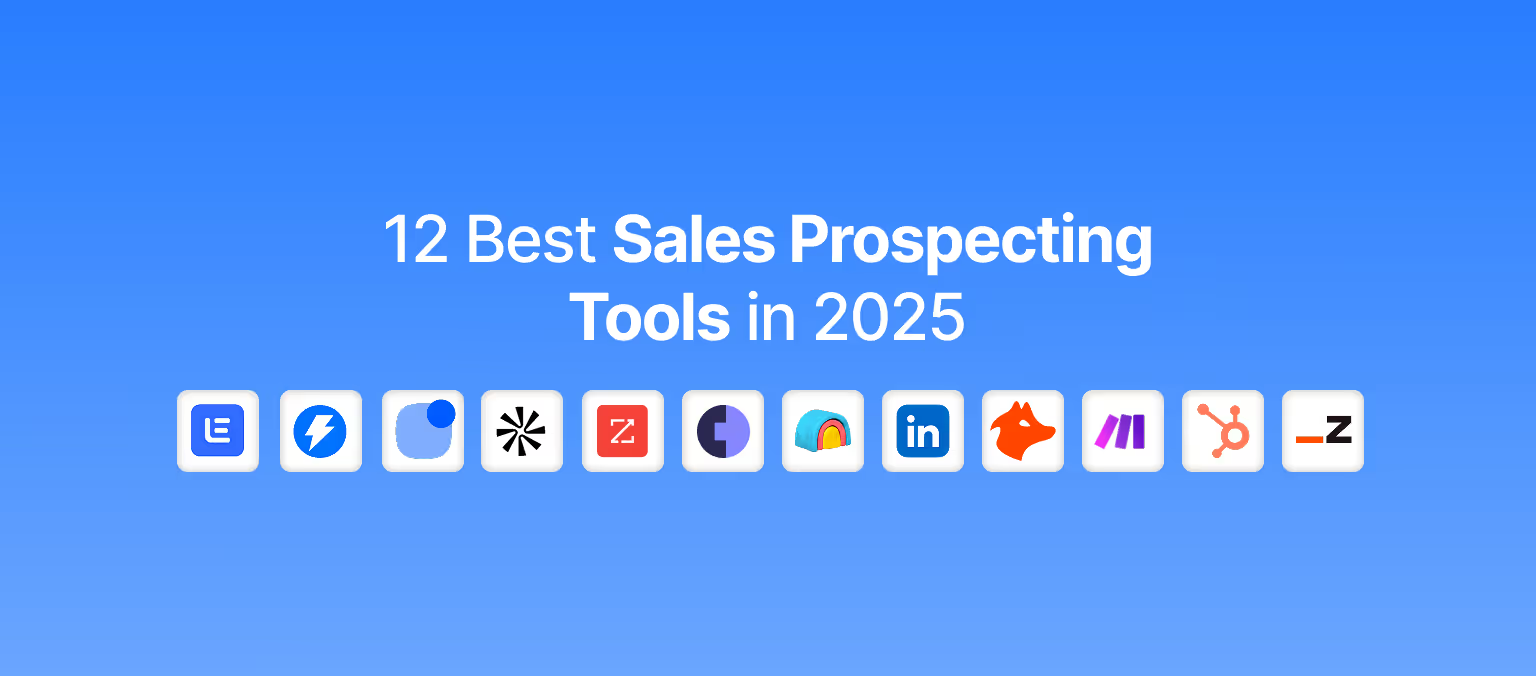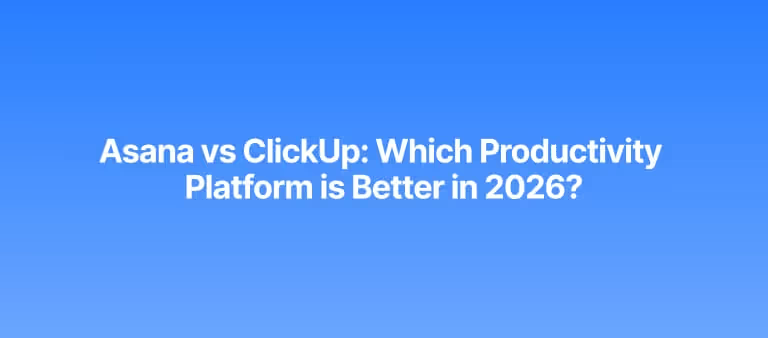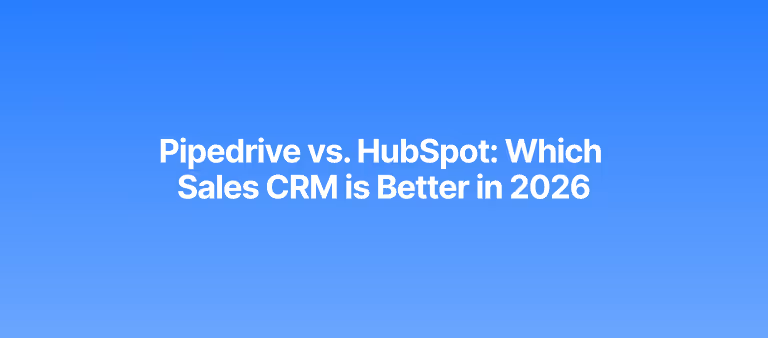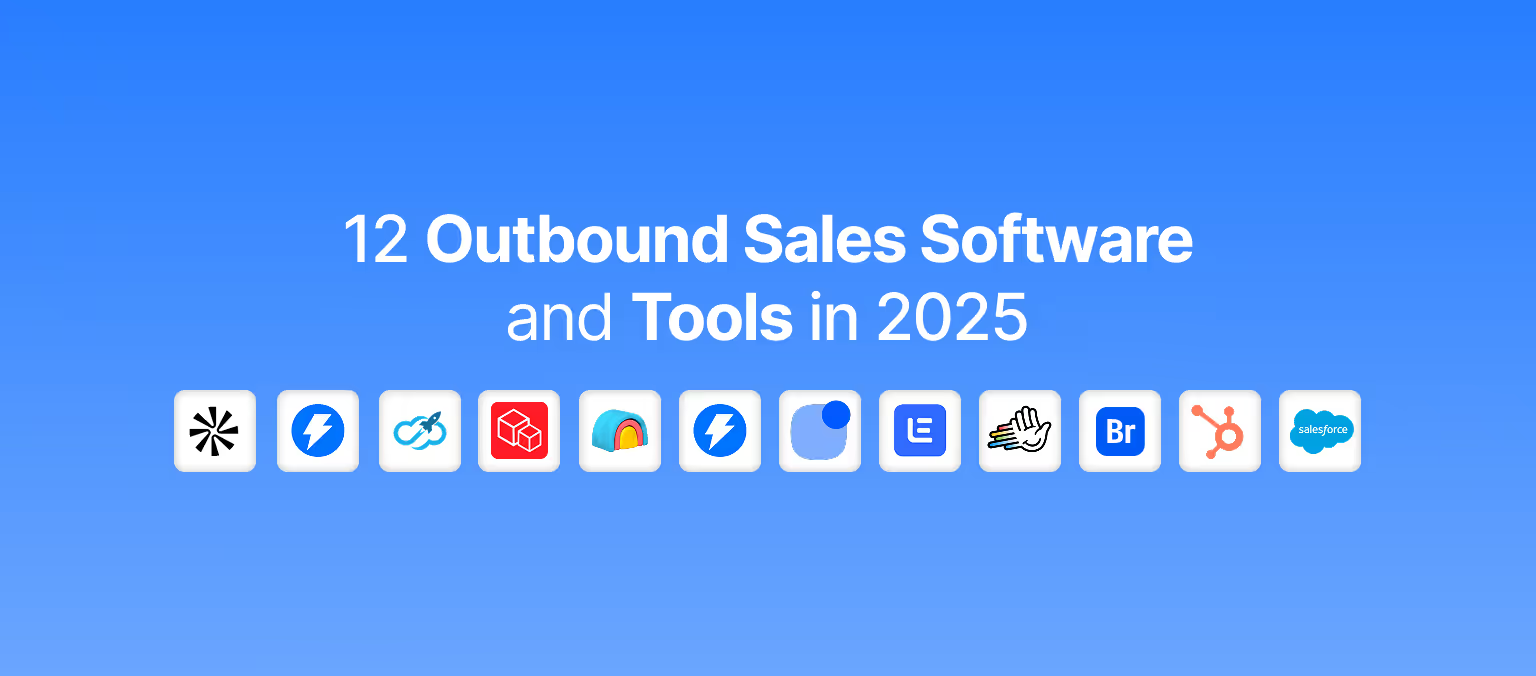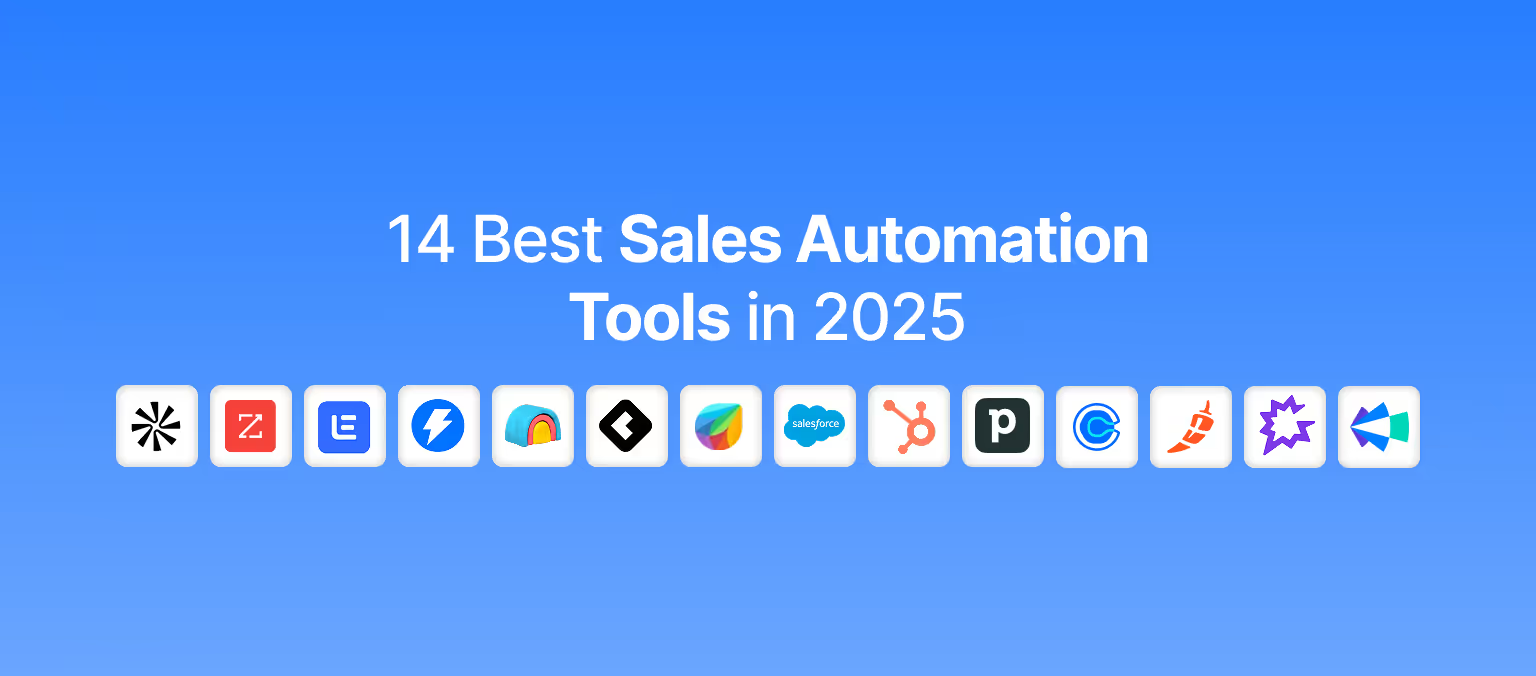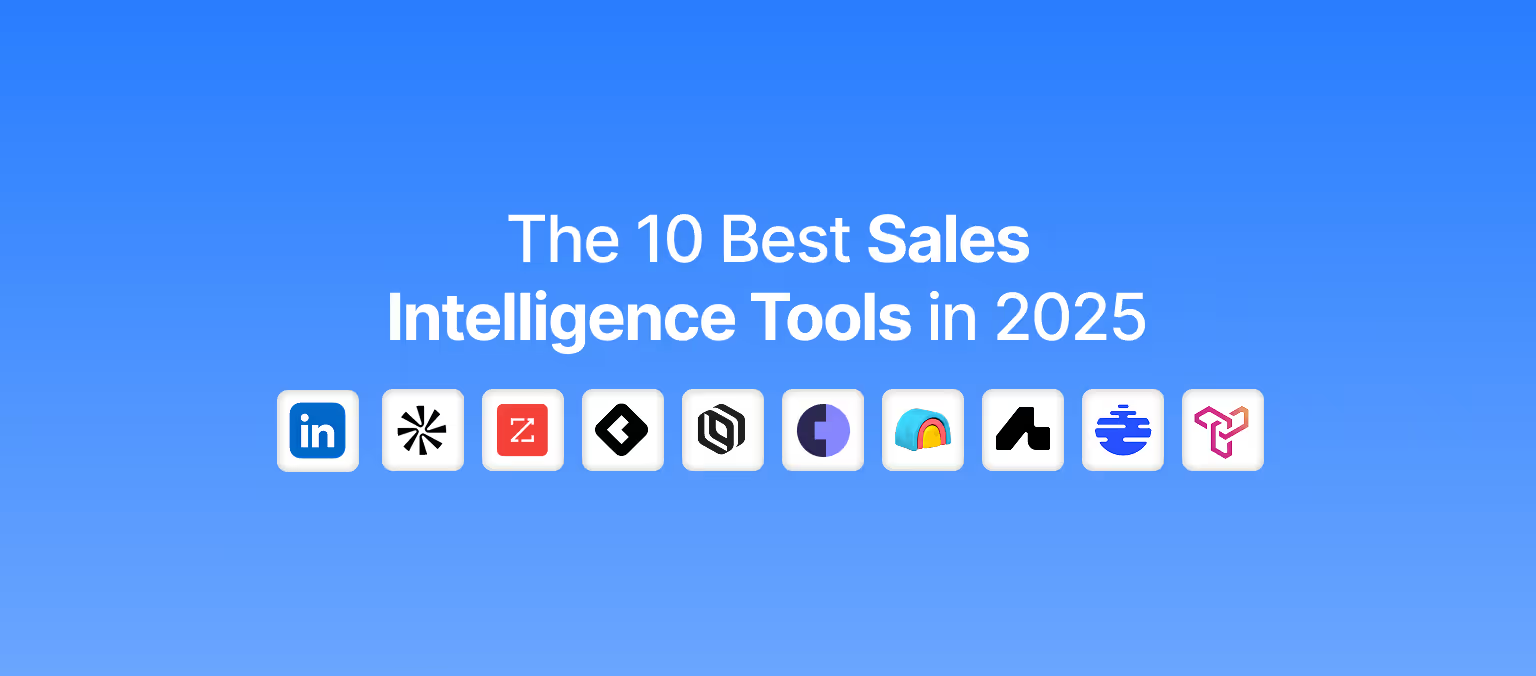Table of content
Share article
Every go-to-market (GTM) engineer understands that they need two things to work effectively — high-quality data and an efficient workflow. While high-quality lead data lets you reach the right decision-maker, an efficient workflow streamlines your sales process to win consistently. Both factors culminate in ensuring a successful outbound campaign.
The right sales prospecting tool will not only find high-quality lead data but also help you prioritize, personalize, and automate your outreach workflow at scale. I’ve considered the 12 best sales prospecting tools and performed an in-depth test to narrow down the best options.
Ranging from email outreach tools to sales intelligence and automation platforms, cold email agencies leverage these products to fuel your pipeline with consistent sales opportunities. Let’s get started.
How We Choose the Top Sales Prospecting Tools
When you surf the web for the top sales prospecting tools, you will find many lists from various companies. But what makes this one so different?
For starters, many of those lists lumped up different sales prospecting tools without identifying their standout features. For instance, while Apollo is renowned for its vast lead database, Lemlist is reputable for its cold outreach features.
Second, I didn’t just consume web materials and customer reviews. I spent hours researching and testing the best sales prospecting tools. On top of this, our sales reps have been using these tools to find quality leads and drive revenue growth for years. As a result, I signed up for some of these tools, testing different scenarios and unique features, to make the text more concise. During the testing phase, I discovered that some of the tools serve as an all-in-one solution while others have unique features.
Nonetheless, here’s what I was looking for in the best sales prospecting tools:
- Ease of use: The learning curve should be low enough for users to access any features. Whether it is building a lead list, enriching an existing one, or automating outreach sequences, users should reliably access the features they need without resorting to any familiar tool.
- Artificial intelligence (AI): AI is no longer a nice-to-have feature; it’s a core function of any sales prospecting tool. I looked into tools that incorporated AI into their systems to save time, reduce human error, and streamline the sales process.
- Dedicated prospecting features: Many sales prospecting tools could be an all-in-one solution, while some could focus on one key feature.
- Integration capabilities: Since sales professionals tend to use different software, integration is essential for sales prospecting tools. Users should be able to connect these tools with other third-party platforms for easy data transfer and enhanced workflow.
The Best Sales Prospecting Tools at a Glance
12 Best Sales Prospecting Platforms in 2025
Here are the 12 best sales prospecting platforms in 2025.
A. Email Outreach Tools:
Email outreach tools are essential for enhancing personalization and streamlining communication for cold outreach campaigns.
1. Lemlist: Best for personalized cold email outreach with dynamic content and automated follow-ups. Ideal for sales teams focused on multichannel prospecting and high deliverability.
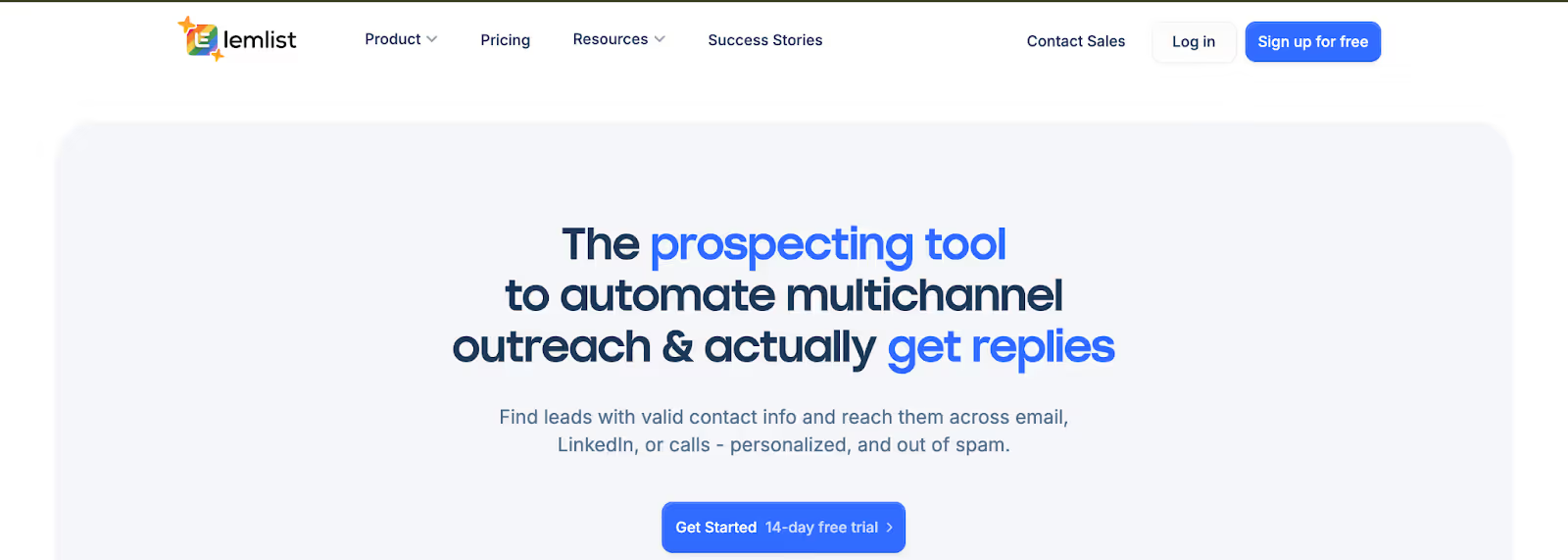
Lemlist is a sales prospecting and email outreach platform designed to help sales professionals land more meetings through highly personalized email campaigns. It’s not just another email tool you use for sending mass messages. Instead, think of it as an all-in-one platform for handling your cold outreach process, from finding qualified leads to email deliverability.
Lemlist automates your cold outreach messages without sacrificing a human touch. When other tools stop at first name, Lemlist goes a bit deeper – with custom images, dynamic videos, and landing pages — to tailor messages for each lead.
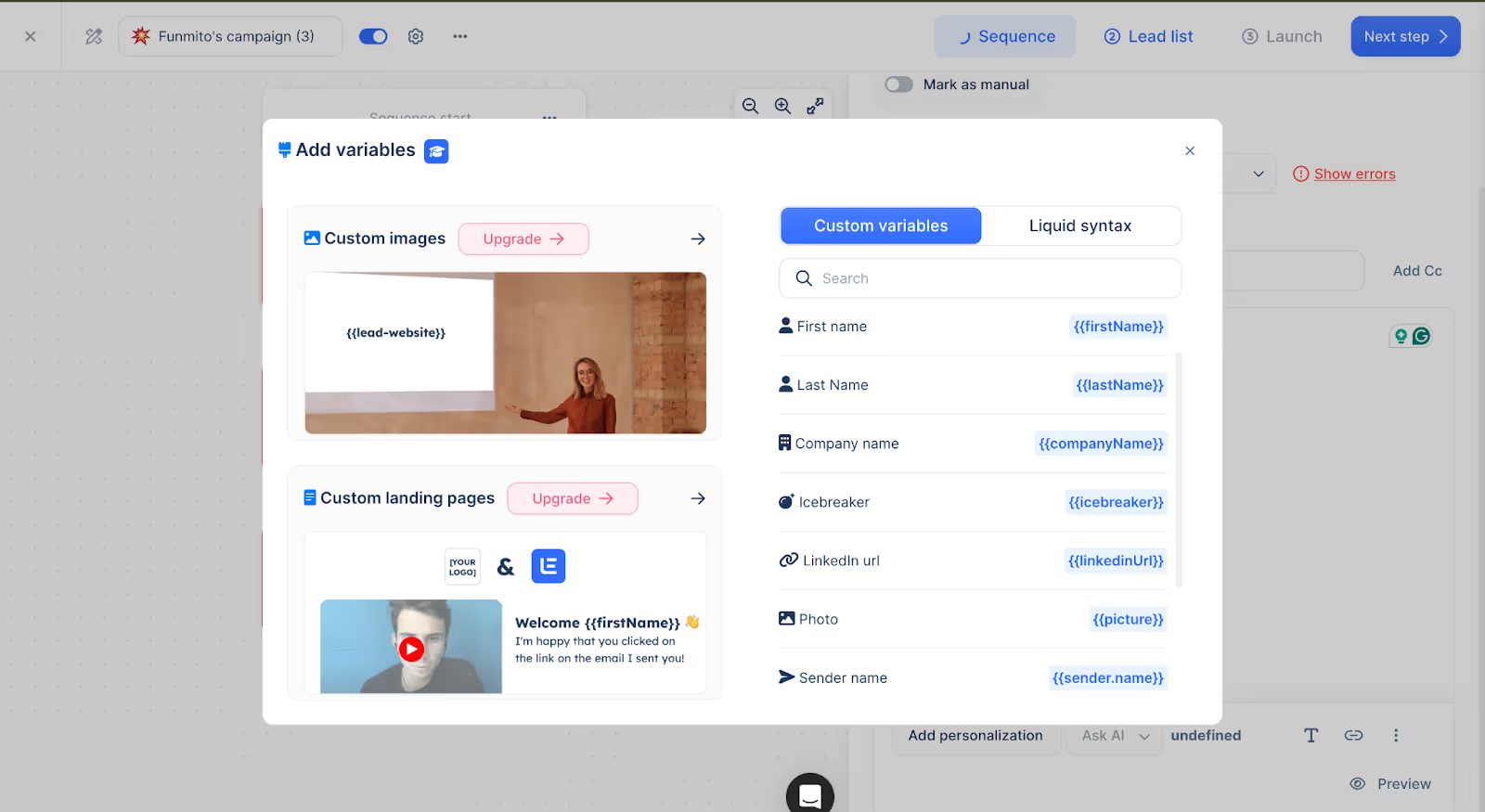
You can also leverage liquid syntax, which allows you to use logical and comparison operators to modify your email content based on the lead’s data. For instance, you can use Spin Spintax to generate variations of sentences for each email, creating a unique message and increasing the chances of deliverability.
An example is:
{% spin %} {% variation %} Let’s talk next week. {% variation %} I think we should meet. {% variation %} How about we have a brunch {% variation %} Let's book a call next week. {% endspin %}
Each email will include a randomly selected variation, making your campaigns unique to both the prospects and email service providers (ESPs). Lemlist stands out for its multichannel campaigns, which you can run from a single workflow. You don’t have to bounce between four platforms anymore, as you can prospect on LinkedIn, send personalized emails, make cold calls, or track performance from one platform.
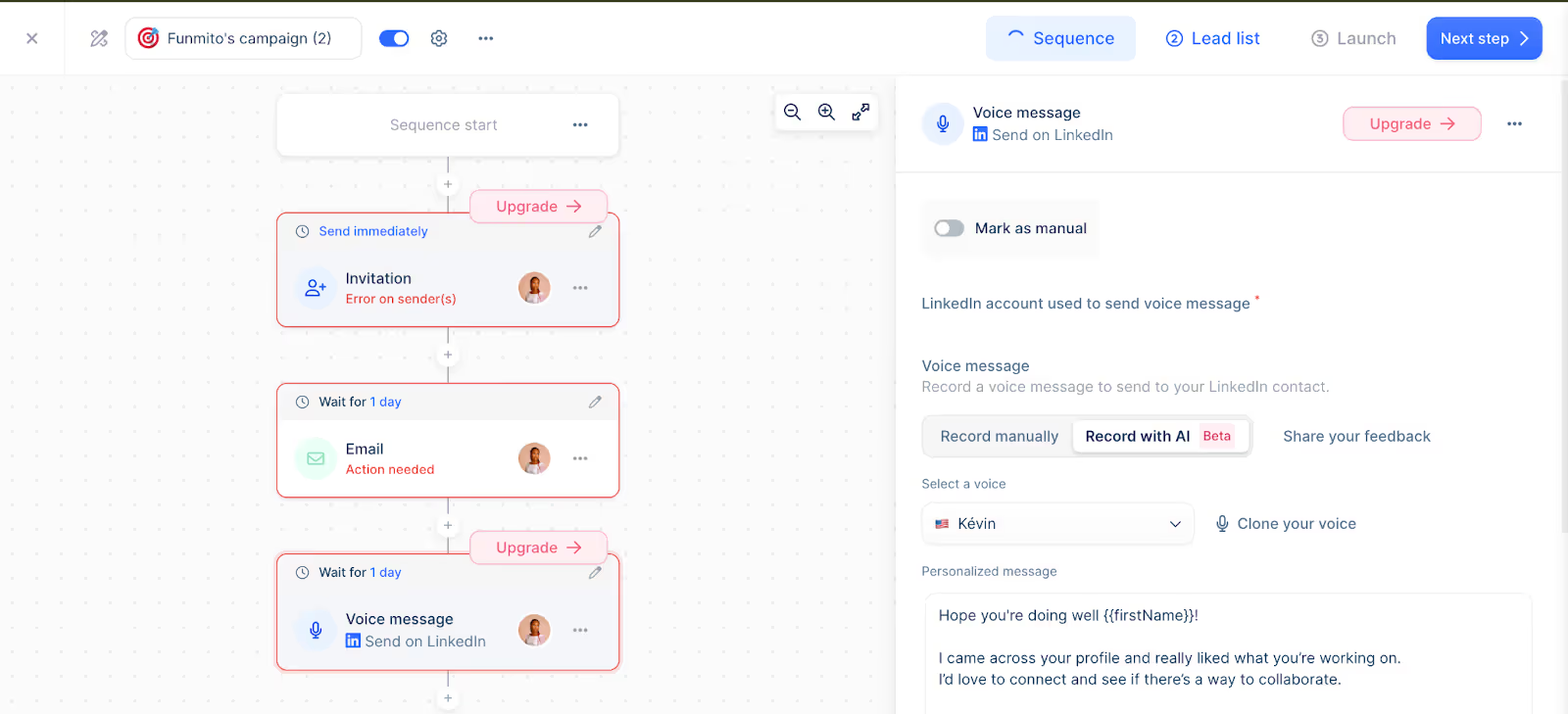
Key features
- Image and Video personalization: Add custom images (logos or GIFs) or videos in your emails to catch attention faster and engage your prospects.
- Multichannel prospecting: Meet prospects on their preferred channel without juggling tools. If a lead doesn’t reply to an email, you can send a LinkedIn message from a single workflow.
- Email deliverability: Warm up your email domain with Lemwarm to increase the chances of deliverability.
Use cases
- SDRs can use it to build targeted outbound sequences for leads.
- Recruiters can reach out to top talent with personalized pitches.
- Agencies can scale multiple outreach campaigns for multiple channels across various niches.
Pros
- Clean, intuitive interface for users without a technical background.
- Multichannel option to reach prospects on their preferred channel and scale your outbound efforts.
- Strong CRM integration to work seamlessly across various platforms.
Cons
- Some advanced features require a learning curve.
- It can be more pricey than most basic cold email solutions.
Customer review
“Lemlist is a great packaged deal for handling outreach across channels. It has a nice combination of flexibility and built-in features that save time versus combining multiple services.” — Will, T. on G2.
Pricing
Lemlist’s paid plan starts at $69 per month.
2. Instantly: Best for high-volume cold email outreach with smart deliverability tools. It scales outbound campaigns across multiple inboxes while maintaining a high sender reputation.
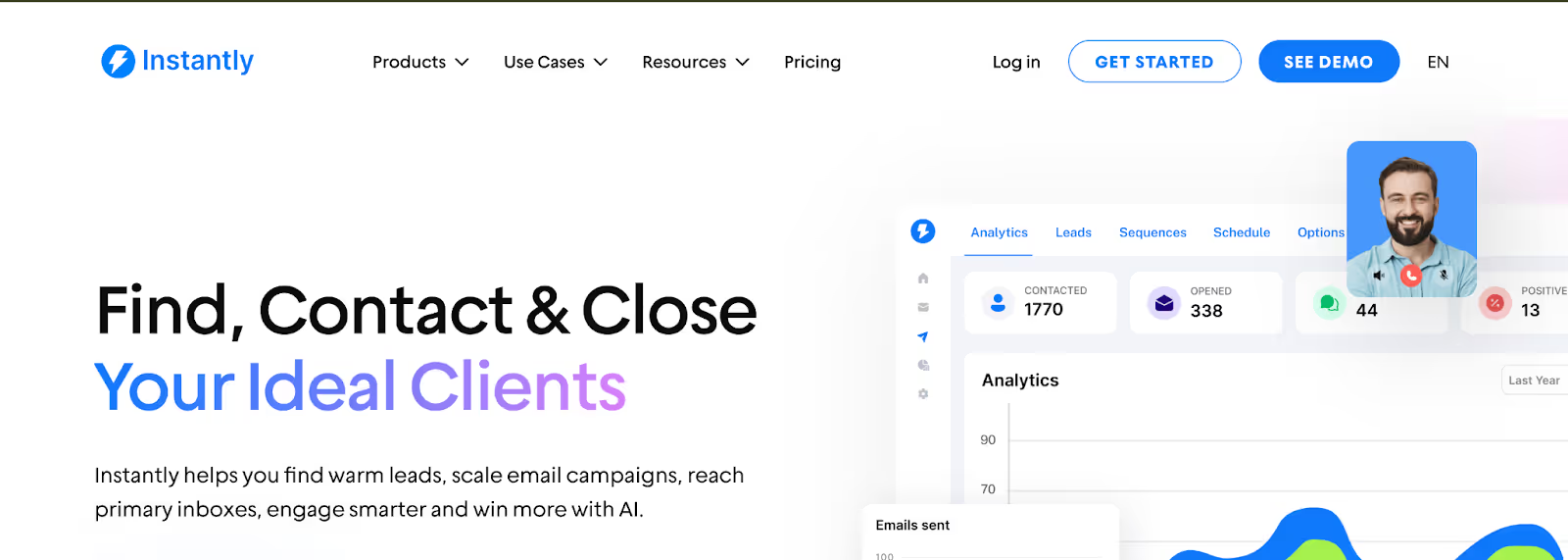
Instantly is another sales prospecting tool designed to scale your outbound efforts without sacrificing deliverability. It’s ideal for sales reps, founders, and agencies who intend to reach their prospects’ inboxes while maintaining sender reputation. Instantly automates your cold outreach efforts across multiple inboxes so you can reach thousands of prospects daily, without landing in the spam folder. You can connect unlimited email accounts to Instantly and rotate the sending process automatically.
The more email accounts you add, the more emails you can send. Each email account can send up to 250 emails, so with 12 accounts, you’re looking at 3,000 emails per day. Instantly stands out for its email infrastructure that allows your cold emails to land in the inbox, not the spam folder. Its SISR (Server & IP Shading and Rotation) system assigns private servers and IP blocks to improve email deliverability. In other words, this system handles the technical aspect of maintaining sender reputation so you can focus on selling.
Key features
- Unlimited email account management: You can connect dozens of email accounts to automatically rotate sending and deliver the volume of emails into the prospect’s inbox. The platform handles the warmup, reputation management, and DNS configuration so you can focus on what matters most — selling.
- AI personalization: You can add dynamic custom fields, use AI to insert relevant lines, and scale personalized outreach.
- Unified Inbox: You can manage and reply to all conversations from a single platform. You can also categorize emails into various sections- meetings booked, interested, and not interested.
Use cases
- SDRs can target specific leads with personalized sequences.
- Sales agencies can manage all clients’ outreach from a single dashboard and track campaign performance.
- Recruiters can reach candidates with multi-touch sequences.
Pros
- It’s an all-in-one tool for prospecting, personalized outreach, and email deliverability.
- Its infrastructure investment places emails in the inbox, not spam folders.
Cons
- It’s more complex than other basic email outreach tools.
- It doesn’t integrate seamlessly with other CRMs. You need to connect yours.
Customer review
“We've been using Instantly for our outbound campaigns and absolutely love it. The interface is intuitive, and we've consistently booked high-quality meetings thanks to their system.” — Tizian, R. on G2.
Pricing
Instantly’s pricing starts at $37 per month.
3. Reply.io: Excellent for AI-assisted email writing and workflow automation, making it a strong choice for larger teams looking to scale outreach and improve email response rates.
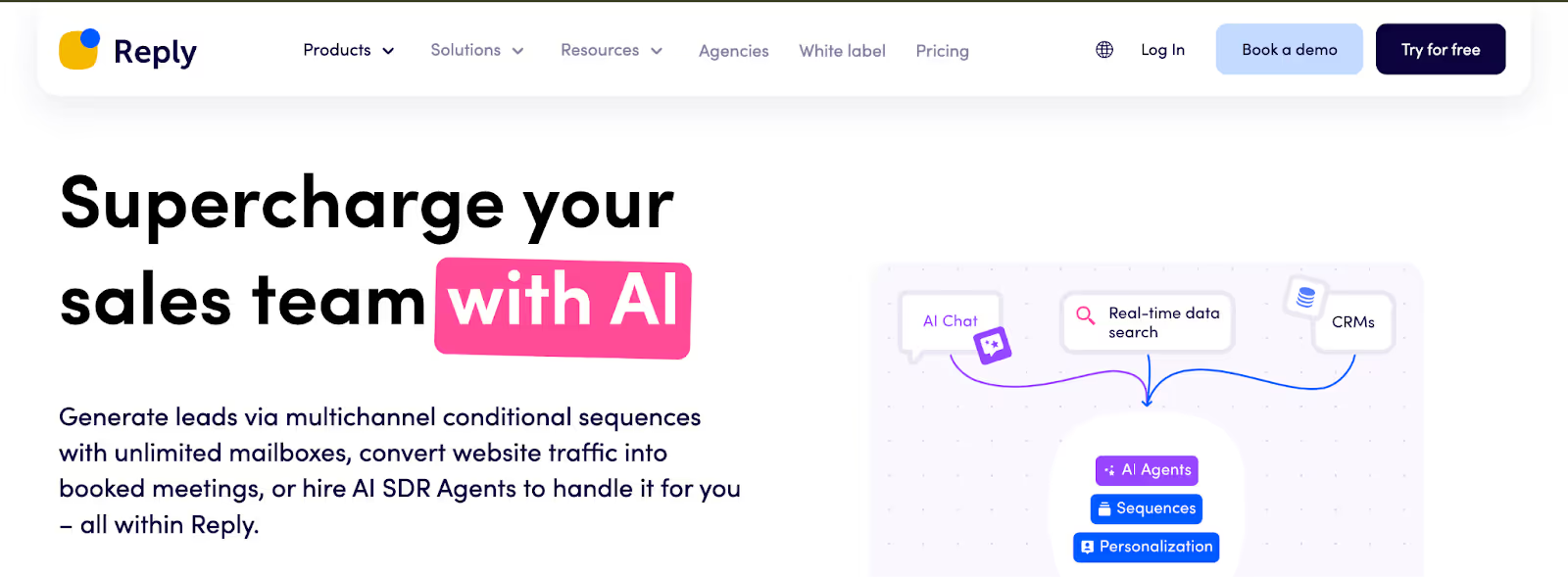
Reply.io is an all-in-one sales prospecting tool designed to help you connect with leads at scale through personalized, automated outreach. It’s perfect for SDRs who want to streamline their cold outreach workflow without sacrificing the human touch.
Reply also doubles as a sales engagement platform that automates your outbound email outreach at scale. For instance, you can use AI variables to create variations that make your personalized messages unique and maintain your brand’s voice. Or you can use ChatGPT to generate drafts based on the lead’s data, tone preferences, or past successes from the platform.
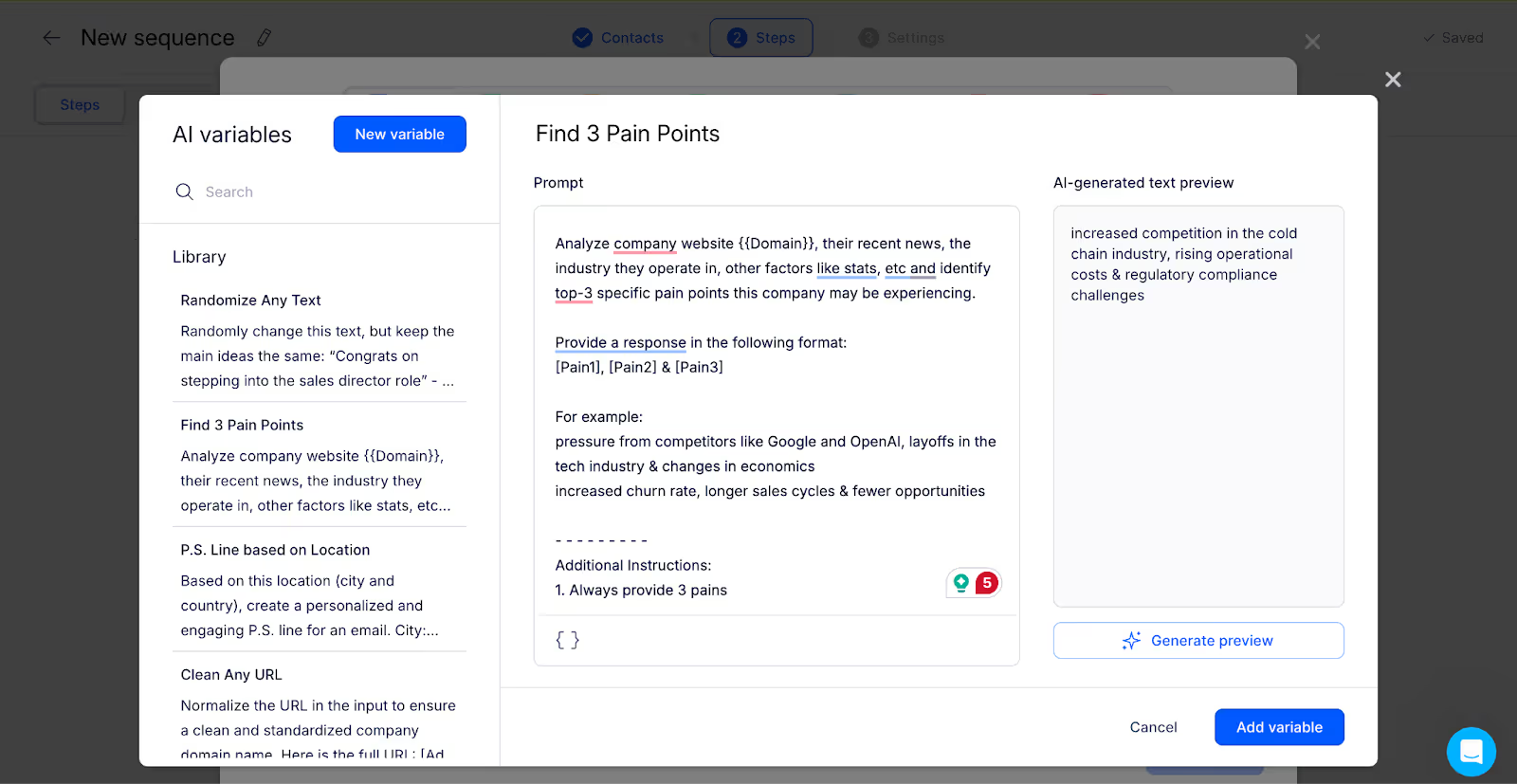
You can also build smart sequences and engage your prospects across multiple channels- emails, calls, SMS, LinkedIn, or WhatsApp. Whether you’re sending 100 or 10,000 emails monthly, Reply enables you to reach your prospects efficiently.
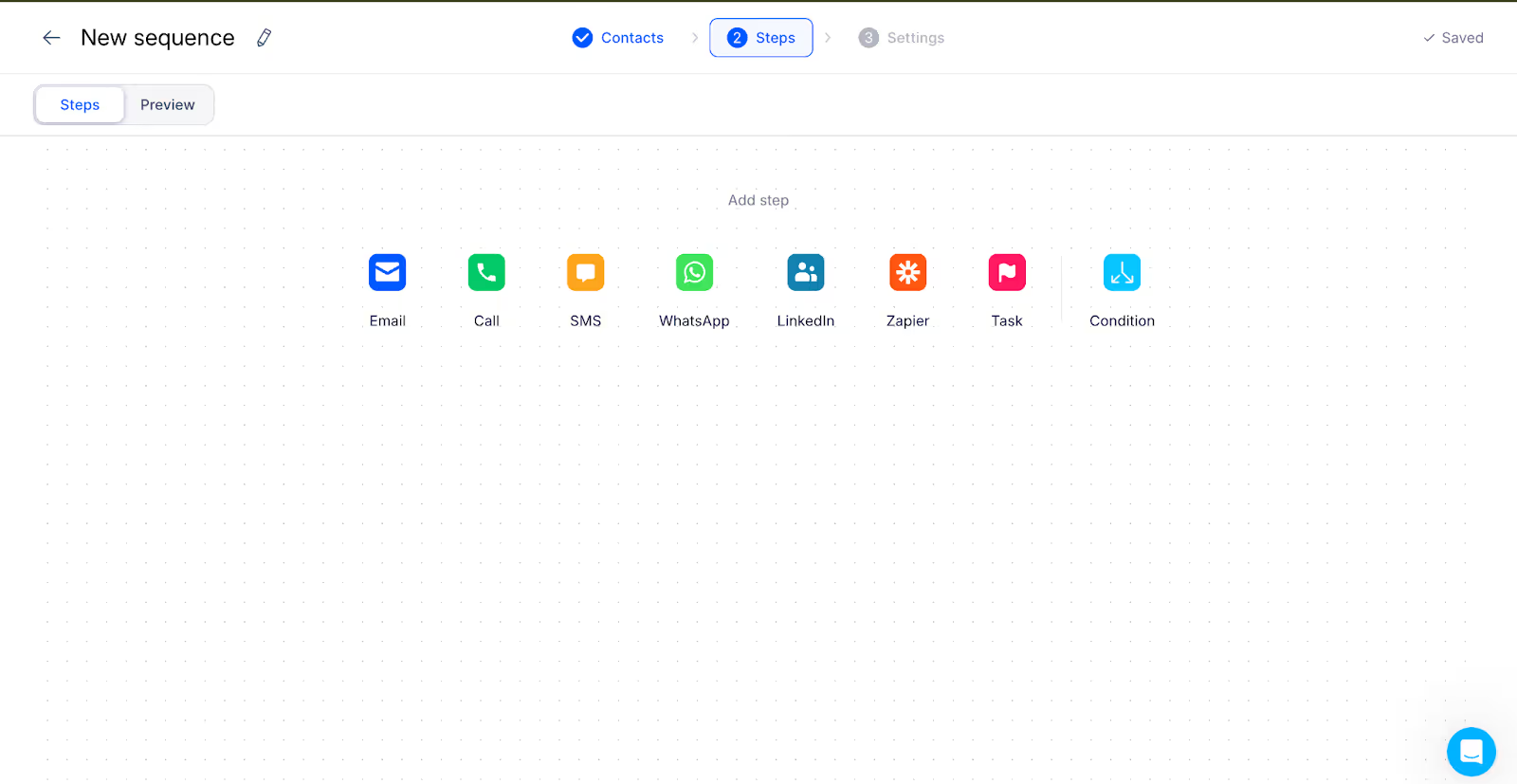
Reply doesn’t only automate; they also optimize. With its AI-powered features, you can craft tailored messages that suit each prospect’s needs at scale. Besides, its warm-up and inbox rotation feature allows you to reach your prospects’ inboxes, not the spam folder.
Key features
- Multichannel sequences to build an outreach flow with emails, calls, SMS, LinkedIn, and even WhatsApp.
- AI Personalization: You can use an AI assistant (AI variables or ChatGPT) to generate personalized messages that resonate with prospects.
- Email Deliverability: You can warm up emails and rotate the inbox to improve sender reputation.
Use cases
- SDRs can run cold outreach at scale, thanks to their all-in-one features.
- Agencies can juggle multiple clients’ needs with Reply.
- Startup founders can run prospecting to land beta users or close deals early.
Pros
- Simple, intuitive interface to build a lead list, set up sequences, and track performance.
- Reach your prospects across various platforms with multichannel automation
- AI personalized messages to increase the chances of conversion.
Cons
- It may become expensive for users as they scale.
- Limited integrations with third-party platforms.
Customer review
“The ability to mass-send emails as if they were custom emails is fantastic. I recommend this to all my clients.“ — Rocky, K. on Capterra.
Pricing
Reply’s pricing plans start at $179 per month/user.
B. Lead Generation Platforms:
These tools excel at providing accurate, targeted lead data for outreach.
4. Apollo.io: Best for a massive contact database and automated outreach with a built-in dialer. Ideal for teams seeking large-scale, automated lead generation.
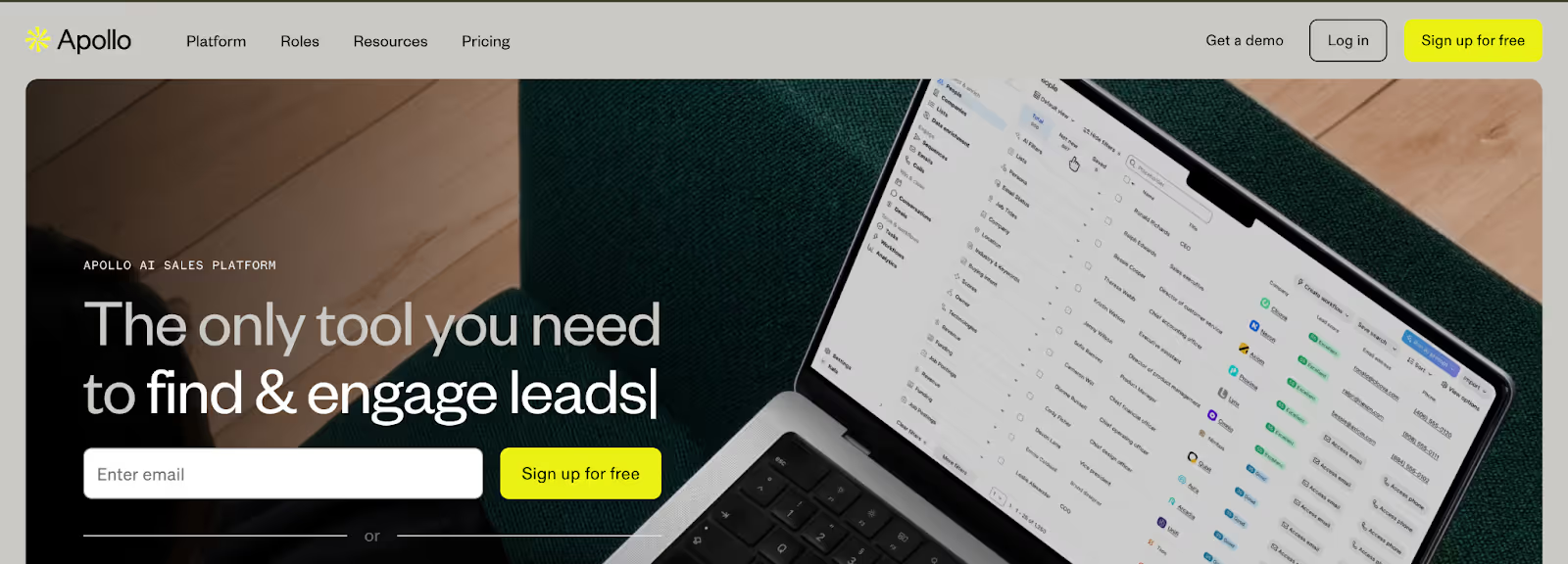
Apollo is a sales intelligence and engagement platform designed to help sales teams find qualified leads, engage with them, and convert them into paying customers efficiently. Apollo isn’t just any typical sales prospecting tool; it’s your powerhouse engine for B2B lead generation. With its extensive database of over 210 million contacts, sales reps can find highly-targeted leads to boost their sales efforts. Besides, the sales prospecting tool combines data enrichment with an outreach sequence to create a streamlined workflow.
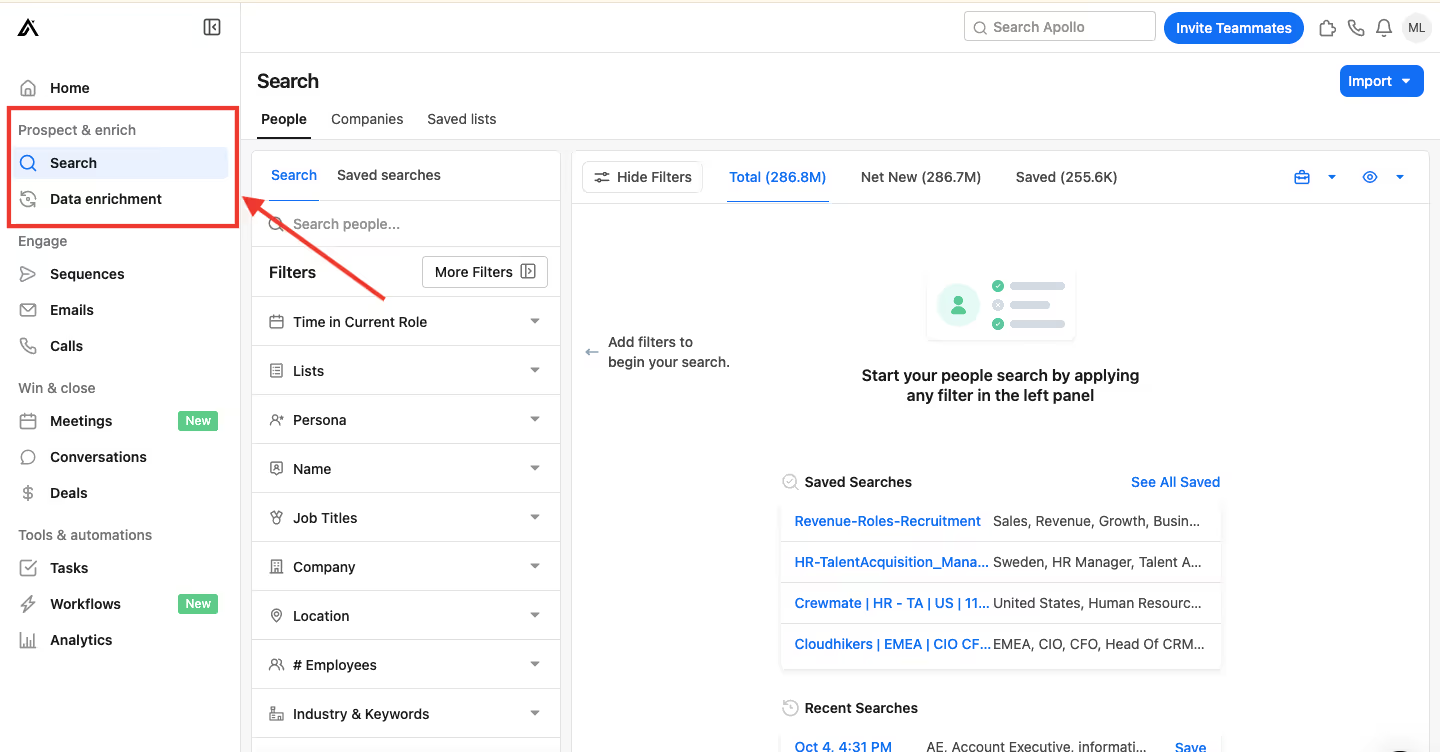
Apollo is the perfect choice to streamline your prospecting workflow in one ecosystem. Its database not only finds leads; you can refine the results based on specific criteria such as job title, location, employees, industry, and funding rounds to create a highly targeted list.
Key features
- Advanced lead search and filtering: You can find highly-targeted prospects that align with your ICP to boost your prospecting efforts.
- Data enrichment: You can upload your existing lead list and let Apollo fill in all the missing contact details (phone numbers, email addresses, LinkedIn URLs, or other firmographic information).
- Multi-channel sequences: You can reach your prospects on their preferred channel — email sequences, phone calls, and SMS.
Use cases
- Sales reps use Apollo to build outbound sequences and automate their entire sales workflow.
- Outbound marketers use the tool to reach niche segments.
- Agencies use Apollo to find companies that need their service.
Pros
- An extensive database to help you find qualified leads.
- Solid enrichment feature to find missing contact information.
Cons
- Some advanced features require a learning curve
- Its deliverability feature needs fine-tuning to ensure emails land in the inbox.
Customer review
“Easy to use tool that has a lot of built-in functionality for automating outreach. I checked the database against some information that we had about our prospects, and it seemed pretty accurate.” — Aryan, S. on Capterra.
Pricing
Apollo’s paid plans start at $59 per month.
5. ZoomInfo: Ideal for enterprise-grade B2B data, offering advanced filtering capabilities to find the most relevant prospects at scale.

ZoomInfo is another B2B prospecting tool to consider. The renowned sales intelligence platform is designed with an extensive database to supercharge your prospecting efforts with real-time data. With ZoomInfo, sales teams and revenue leaders can find, connect with, and convert prospects faster. Rather than scraping LinkedIn data for hours, you get access to real-time data that connects you with decision-makers across different industries and job titles. It pulls buying signals, verified contact information, and other firmographic details, all in one place.
Unlike other tools, ZoomInfo provides quality data to ensure you don’t waste time with outdated information. Besides its intent signals feature enables you to see companies actively researching solutions like yours, granting you access to warm leads.
Key features
- Advanced search and filtering: Want to find CEOs of SaaS companies with 50-200 employees who raised Series funding in the past 6 months? ZoomInfo got your back. Its extensive database, combined with Boolean search, allows you to refine your lead list and target high-quality prospects.
- Buying Signals: Monitors web activities to find companies actively searching for solutions like yours.
- Workflow automation: Allows you to monitor your prospecting workflow. From multi-channel sequences to tracking performances, you can streamline your entire sales process.
Use cases
- Outbound sales teams want to fill their sales pipeline with quality leads faster.
- Account-based marketing (ABMs) that need deep account intelligence and buying triggers.
- Recruiters sourcing top talent across various industries.
Pros
- Provides accurate data to boost your prospecting efforts.
- Intent signals offer timing advantages that allow you to seize the right opportunities.
Cons
- Premium pricing may be a disadvantage to small teams’ budgets.
- Learning curve is steep, as it takes time to master advanced features.
Customer review
“I like how leads and the contact Numbers on Zoominfo are accurate and mostly not fake compared to other software B2B contact data. I like how easy it is to implement. I use it every day to fetch data and contact details. It's very user-friendly. It was easy to integrate. Customer support has been really nice.” —- Suzette, R. on G2.
Pricing
Contact the sales team for a quote.
6. Cognism: Perfect for GDPR-compliant lead generation and intent data, with a strong focus on the EMEA region, which can be crucial for teams working in or targeting Europe.
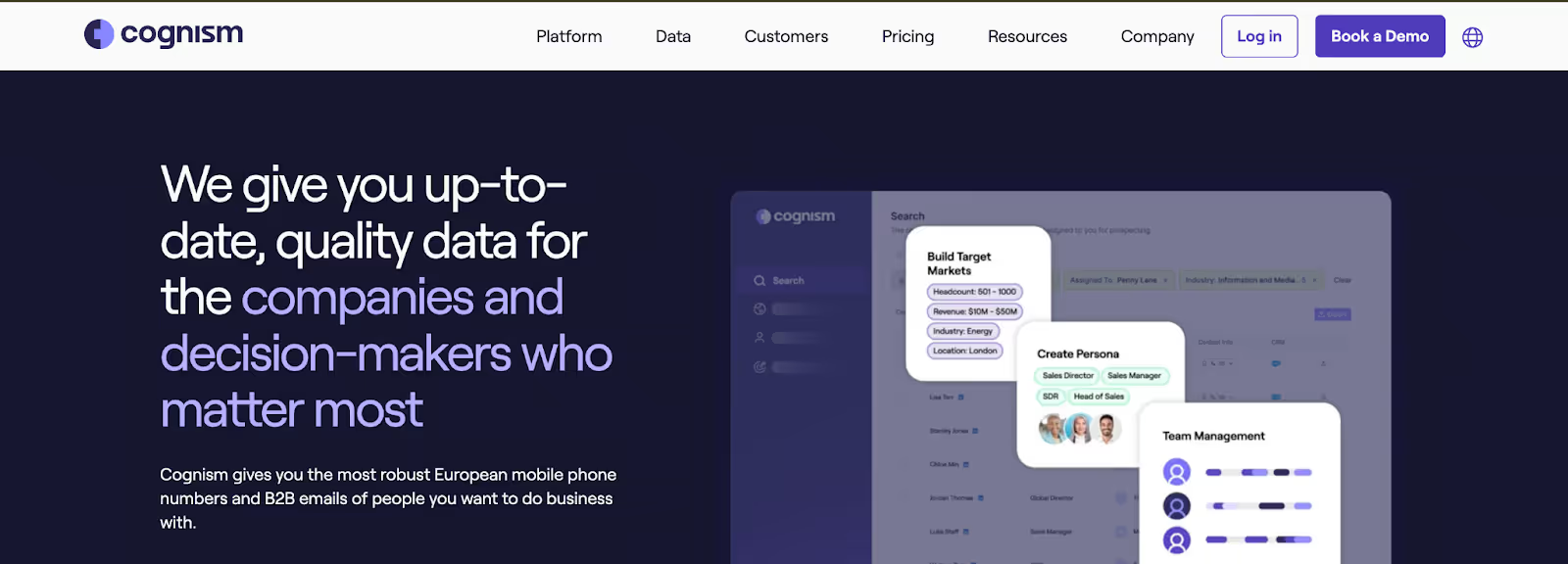
If you’re tired of chasing low-quality leads, Cognism is your best shot. The leading sales prospecting software raises a new standard for data quality and compliance, allowing you to fill your sales pipeline with real sales opportunities, not just contacts.
Cognism helps sales reps find, engage, and convert their ideal prospects. As a GDPR-compliant company, they provide access to company-specific data and verified contact data, enhancing your lead generation and qualification efforts. In other words, they give you emails that don’t bounce, phone numbers that actually work, and intel to help you communicate effectively during sales conversations.
Cognism stands out for one reason: quality. It goes beyond names and job titles. You get valid email addresses, direct dials, and intent signals that help reps prioritize the most promising leads. Besides, its compliance with GDPR and other regulations means you don’t have to worry about legal sanctions when you engage in your sales activities.
Key features
- List builder and enrichment: Offers global data coverage to build highly-targeted lists.
- Diamond data: Provides verified phone numbers that directly connect you with ideal buyers.
- Intent data: Offers actionable intelligence to prioritize companies researching your products or services.
Use cases
- SDR teams to build targeted lists and book more meetings.
- Marketers can fuel their ABM or inbound campaigns to find high-value contacts.
- Founders can build their lead list without paying for multiple tools.
Pros
- Provides high-quality contact information, especially in Europe.
- The platform is intuitive and user-friendly.
- Complies with GDPR and other regulatory bodies to avoid legal headaches.
Cons
- Advanced features can take time to master.
- It may be too expensive for small teams or businesses.
Customer review
“What I like best about Cognism is its accurate and GDPR-compliant B2B contact data, which makes prospecting much more efficient. The platform’s real-time data enrichment ensures that sales and marketing teams have up-to-date information, improving outreach success rates. Additionally, its seamless CRM integrations and user-friendly interface make it easy to navigate and incorporate into existing workflows, saving time and increasing productivity.” — Kevin, O. on G2.
Pricing
Contact the sales team for a quote.
C. CRM Integrations & Enrichment:
These tools are ideal for integrating with CRM systems and enriching prospect data.
7. Clay: Perfect for real-time data enrichment and ultra-personalized prospecting in both web and CRM, allowing sales teams to enrich their leads, automate outreach, and combine lead sourcing and research in one streamlined workflow.

Clay is a data enrichment and workflow automation tool designed to help you build an enriched lead list. With access to over 100 data sources and AI research agents, sales teams can easily generate valuable insights to power their revenue efforts.
Instead of switching between five platforms to enrich a lead list, Clay pulls data from over 50+ built-in providers, obtaining their valid email addresses and phone numbers. With this valid contact information, you can easily reach your prospects.
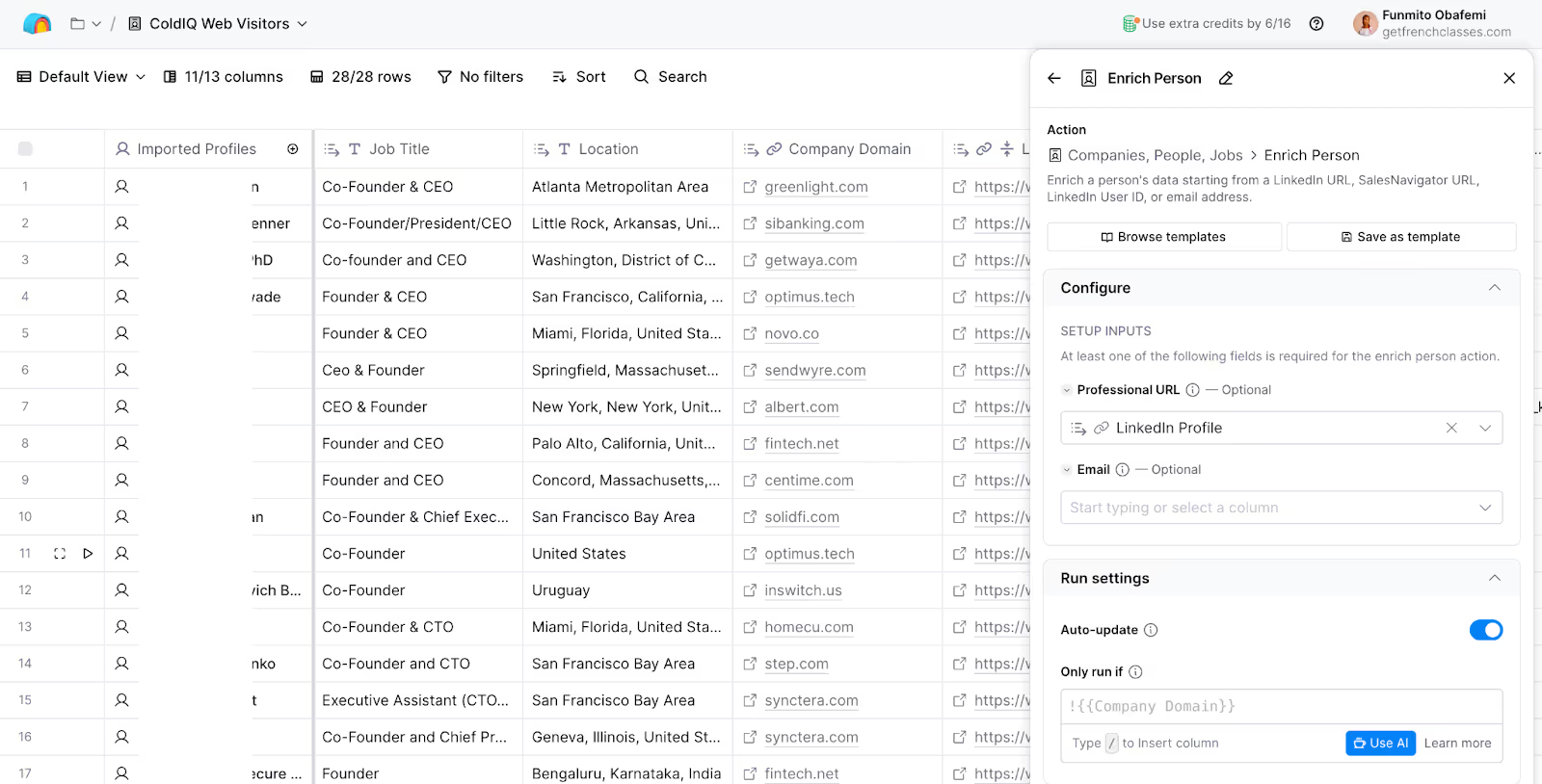
Clay is also renowned for its automated workflow. For instance, you can use its AI agent, Claygent, to research leads or generate transcripts from YouTube videos. Its outbound sequence automation allows you to craft personalized messages and follow-ups, which you can distribute using an AI outreach tool.
Clay stands out for its real-time data — valid email addresses and phone numbers, job changes, tech stack, website visits, social listening, and more. Besides, its seamless integrations with other third-party platforms make it vital for sales processes, supercharging their prospecting efforts.
Key features
- Waterfall enrichment: Pulls data from over 100 sources to find valid email addresses and phone numbers.
- AI research agent: Find and summarize any information obtained from the web.
- Integration: Integrates seamlessly with various third-party platforms.
Use cases
- Sales teams can use it to automate their prospecting workflow.
- Revenue operation teams can leverage it for lead intelligence.
- Founders can use it to reach out to a list of ideal companies.
Pros
- Enriched data from multiple sources means you may never hit dead ends when prospecting.
- You can build a complex workflow without technical expertise.
- Seamlessly integrates with other tools for easy data transfer.
Cons
- Pricing may get expensive, as it’s based on credits.
- Steep learning curve for advanced features.
Customer review
“There's just so much to like about Clay. Here are the highlights for me. A lot of integrations automate our entire workflow. A lot of in-built features and tools for free, such as Clay company search and people search, company URL verification, etc.” — Farzan, N. on G2.
Pricing
Clay’s monthly pricing starts at $149 with limited credits.
8. LinkedIn Sales Navigator: Excellent for lead insights, advanced filtering on LinkedIn, and networking power. It’s especially useful for B2B sales teams looking to leverage LinkedIn’s data to find the right decision-makers.
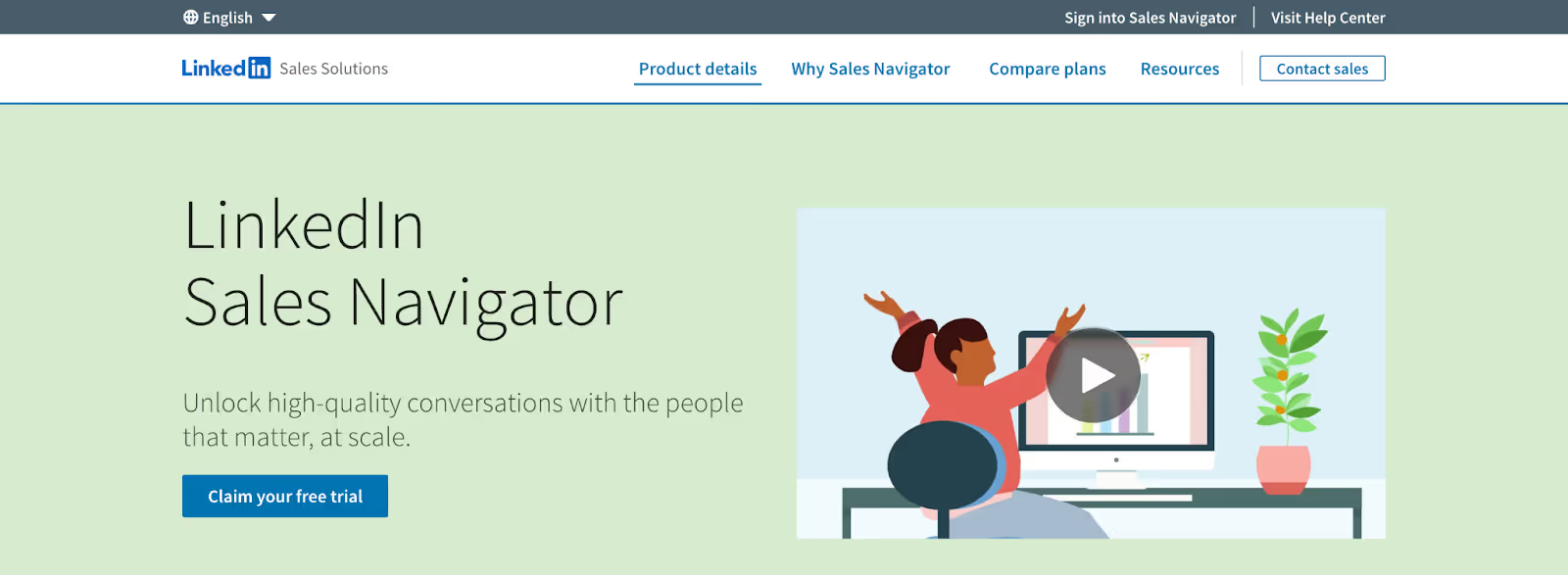
LinkedIn Sales Navigator isn’t just a professional networking platform; it’s a goldmine for B2B sales prospecting. It helps sales professionals find, qualify, and engage leads faster. Whether you’re an SDR seeking to connect with new accounts or an account executive wanting to build relationships with existing customers, LinkedIn allows you to start having warm conversations with your ideal buyers.
LinkedIn Sales Navigator stands out for its rich professional data, intent signals, and native integrations with top CRMs to create an efficient workflow. For instance, it can tell you when a prospect changes jobs, posts content, or engages with networks. These activities allow you to build genuine relationships that can eventually translate into revenue sources.
Key features
- Advanced search capabilities: Allows you to leverage over 50 advanced search filters to find the right leads. This goes beyond basic LinkedIn search — you can filter by seniority level, department, technology used, industry, or other criteria that matter.
- Real-time Activity Intelligence: Provides real-time live intelligence about a prospect’s activities. For instance, when a prospect changes job, posts content, or engages with your posts, you get notified. This allows you to take better actions.
- CRM Integration: Enables you to connect seamlessly with CRMs like Salesforce or HubSpot, which you can use to boost your sales efforts.
Use cases
- Outbound sales teams use the tool to monitor and connect with new accounts, build lead lists, and personalize outreach with real-time insights.
- Recruiters use it to build relationships and find specific candidates for open positions.
Pros
- People maintain their LinkedIn profiles, keeping data accurate.
- Provides live updates on prospects’ activities and job changes.
- Synchronizes with CRMs for easy data transfer.
Cons
- Sales Navigator requires some investment, which may not be suitable for small teams or businesses.
- Advanced features can take time to master effectively.
Customer review
“It's a salesperson's delight. The tool is a core/ must-have for all in a sales team - SDR, AE, AM, and Team leads. The ability to map accounts, see buyers' intel for your focus accounts, intelligent account maps, and so much more makes a salesperson's job easy and reduces manual work. Inmails are an added benefit. I use it every day and it's my go-to tool for account reach out.” —- Nalini, K. on G2.
Pricing
LinkedIn Sales Navigator’s pricing plans start at $119.99 per month.
9. Hunter.io: A great tool for email verification, domain search, and Chrome extension, helping teams to ensure their outreach reaches the right people and reduces bounce rates.
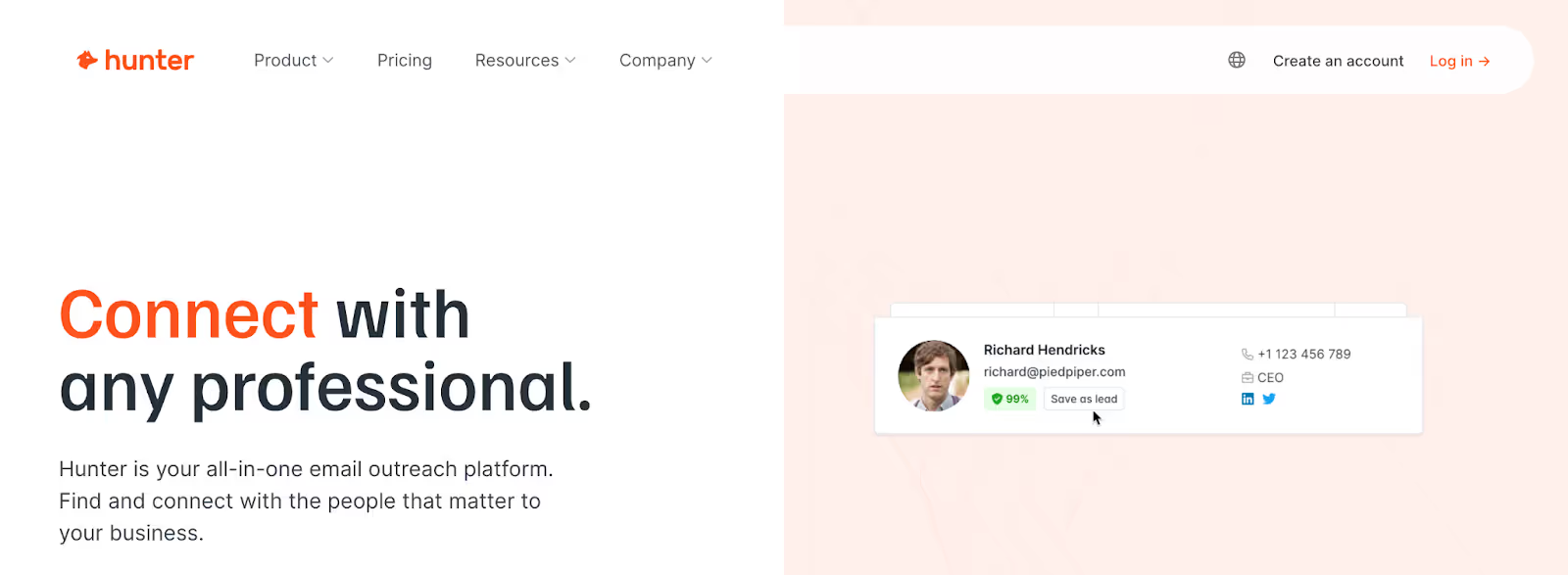
If you intend to find and verify professional email addresses, Hunter is your best shot. As a salesperson, you can leverage this tool to connect with the right people without doing guesswork. Hunter performs one key function — finding verified email addresses for users. With sophisticated algorithms, you can reduce bounce rate by checking the validity of the email addresses and start having real conversations with prospects.
Hunter stands out for its data accuracy and enrichment. While other tools stop at email finding, Hunter backs the data with real-time validation. Besides, its intuitive interface makes it easy to use, making outreach more effective. For a free way to get accurate email addresses, make sure to grab our email finder lead magnet.
Free Email Finder
Find verified email addresses instantly. Use it right here, completely free.
Key features
- Email finder and verifier: Find valid professional email addresses to reach your prospects. It verifies the type of email, server status validity, and the source of email to determine its deliverability.
- Domain search: Finds publicly available email addresses associated with the domain search.
- CRM integration: Connects natively with HubSpot, Salesforce, Pipedrive, and other sales tools effectively.
Use cases
- Sales teams can use it to verify contact information before running outreach campaigns.
- Marketing teams can leverage verified emails to run marketing campaigns.
- Recruiting teams can use it to find suitable candidates for open roles.
Pros
- Hunter provides accurate data, improving the chances of deliverability.
- It has a user-friendly interface, making adoption easy.
- Integrates seamlessly with CRMs and other tools to enhance workflow.
Cons
- A credit-based pricing model that can get expensive as you scale.
- Less focus on phone data
Customer review
“As a busy entrepreneur who has no time to do research about cold email platforms or even learn how it works, Hunter’s platform made the entire experience super easy to understand and use. Not only am I able to execute my outreach campaigns, I feel that I’m also being educated about how B2B sales work.” —- Shou Yee W. on Capterra.
Pricing
Hunter’s pricing plan starts at $49 per month.
D. Sales Intelligence & Automation Platforms:
These platforms are designed for sales teams looking to automate and optimize their prospecting workflows.
10. Make: Best for visual workflow automation and complex integrations across apps. Ideal for teams that need to automate multi-step processes without writing code, using a drag-and-drop interface.
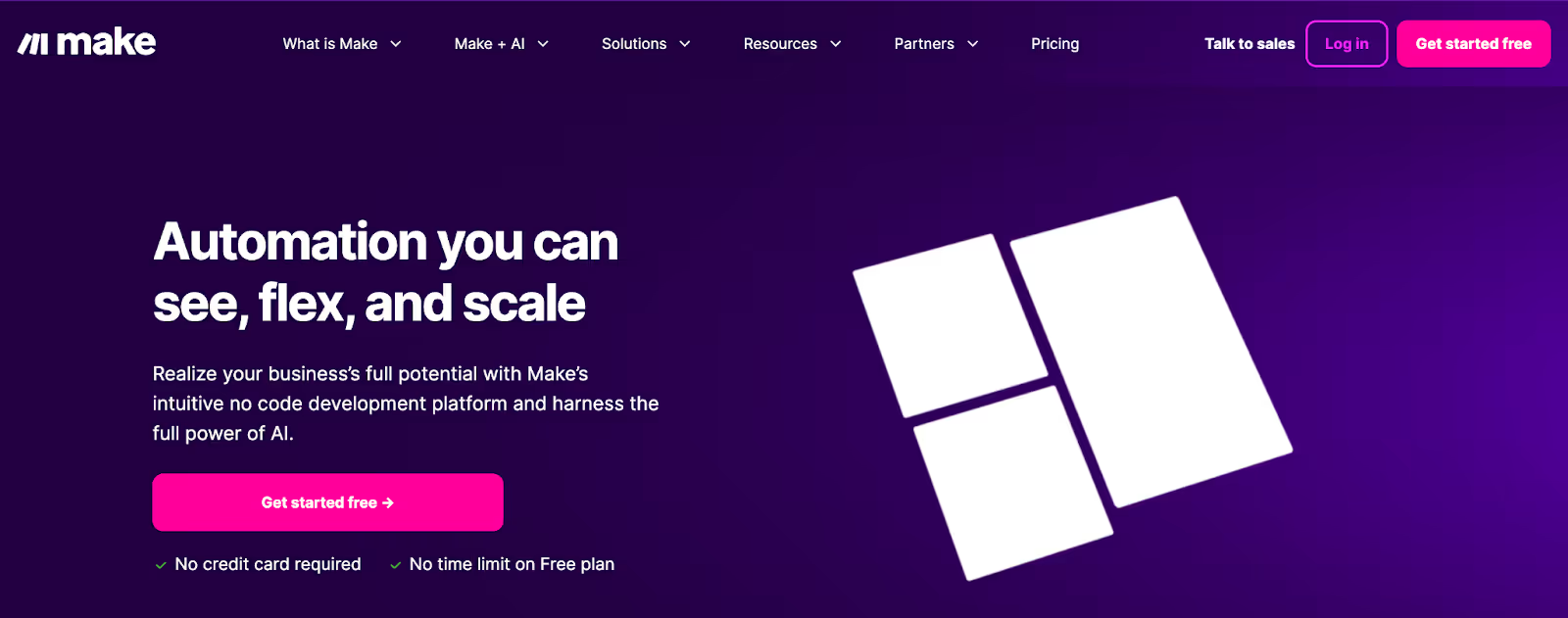
Make is a visual automation platform that allows you to build custom workflows with any of your favorite tools – LinkedIn, Gmail, Apollo, and more. It connects with over 2,000 apps, allowing users to automate workflows even with no technical background.
Make doesn’t find prospects for you. However, it automates the grunt work associated with prospecting — data entry, lead routing, follow-up sequences, and CRM updates. Let’s say you find a new lead. Make can enrich the list via tools like Clay or FullEnrich, trigger personalized sequences via Gmail, send alerts via any project management tool, and update your CRM or Google Sheets, so you can achieve 10x the result with minimal effort.
Make allows all your tools to work together within a single ecosystem. For instance, if you capture a new lead, the workflow automation platform checks your CRM to see if the lead is there. If not, it adds their details and routes the lead to the right salesperson for proper nurturing. Besides, its visual workflow building that doesn’t require coding lets it stand apart from other tools. It can handle complex, multi-step workflows without requiring a developer.
Key features
- Visual Workflow Builder: Allows users to leverage the drag-and-drop interface to simplify sales automation.
- Real-time data synchronization: Filters leads, syncs data, and updates information across all tools without coding.
- Error monitoring: Make has a built-in error monitoring feature that allows you to see what works and set up automatic retries.
Use cases
- Automatically enriches leads from multiple sources
- Routes lead to the right salesperson for further nurturing.
- Manages your sales pipeline by moving deals through stages and allowing you to make accurate forecasts.
Pros
- Simplifies sales automation with a drag-and-drop interface.
- Handles sophisticated conditional workflows.
- Integrates with over 2,000 applications for a streamlined workflow.
Cons
- Complex workflows have a steep learning curve that takes time to master.
- Users report technical glitches that affect operations.
Customer review
“Make.com is a fantastic platform for building automations and no-code solutions. In our company, we often use it for creating prototypes of solutions that we later implement in native programming languages. The number of features it offers is astonishing—significantly more than most competitors.” —- Wiktor, S. on G2.
Pricing
Make’s pricing plan starts at $10.59 per month.
11. HubSpot Sales Hub: A comprehensive all-in-one CRM with excellent email tracking, sales automation, and prospecting tools. Great for teams looking for a seamless CRM experience with built-in outreach tools.
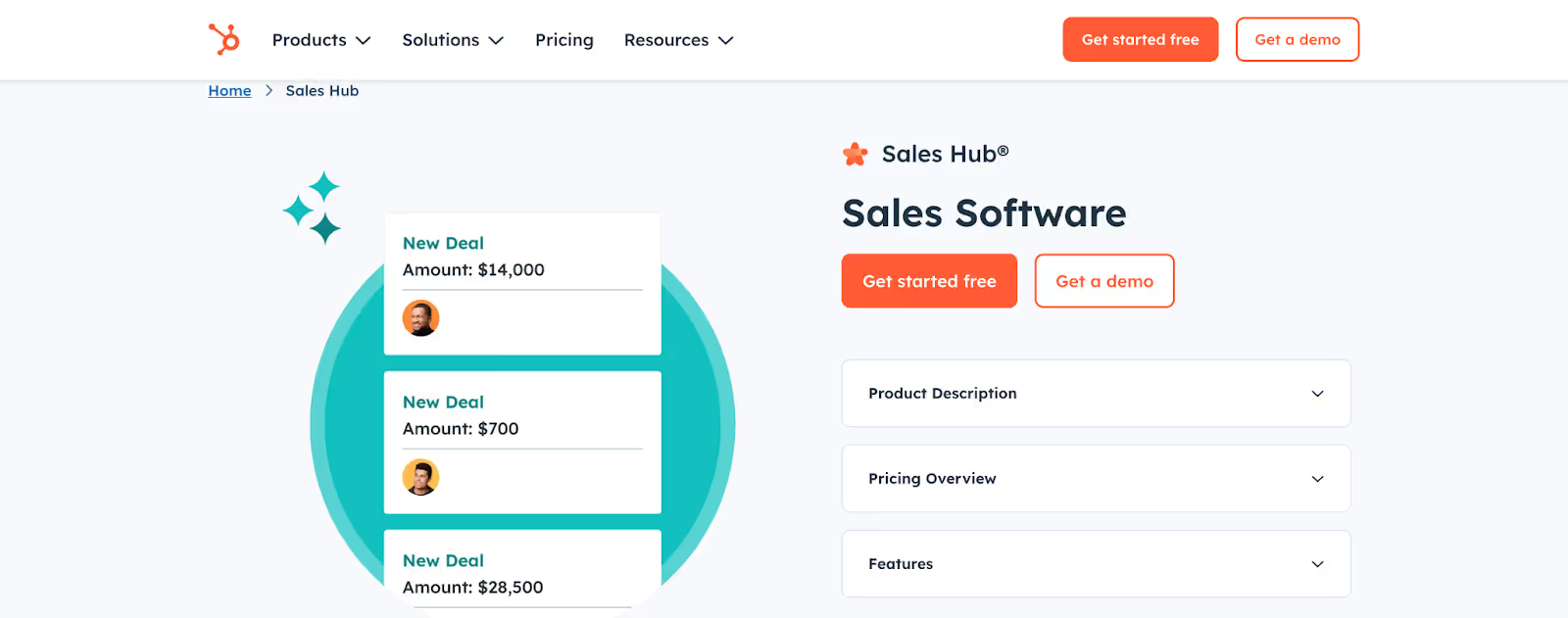
HubSpot Sales is an all-in-one customer relationship management (CRM) platform designed to manage your entire sales process, from finding potential leads to tracking progress and automating sales workflow. HubSpot Sales manages your leads and other sales activities from a single platform. Whether it’s logging emails, tracking prospects’ engagement, or streamlining workflow, it automates repetitive tasks so you can focus on other matters like closing deals.
HubSpot’s main advantage is integration. Your prospect’s data, emails, calls, and other vital information all interact with each other. You don’t have to juggle between platforms to streamline your workflow.
Key features
- Email Sequences: Craft personalized sequences to increase the chances of getting a positive response.
- Workflow automation: Automates repetitive tasks like data entry to save time and drive efficiency.
- Sales analytics: To identify what’s working or areas that need improvement, ultimately refining your strategies.
Use cases
- SDR teams can streamline operations by automating repetitive tasks and focusing more on strategic activities.
- RevOps teams can use the platform to eliminate data silos and bridge the gap between marketing and sales teams.
Pros
- Has an intuitive interface that enables quick adoption.
- Built-in AI and automation to enhance your workflow.
- Integrates seamlessly with third-party platforms.
Cons
- Advanced features require higher-tier plans, which may become expensive for small teams or businesses.
- Limited customization, which may restrict the business’s needs.
Customer review
“I love how intuitive and user-friendly the platform is. It didn’t take much training for our team to get the hang of it, and now it’s part of our daily workflow. The pipeline view is especially helpful for keeping track of deal stages, and the automation features save us a ton of time. I also appreciate how well it integrates with our other tools like Gmail, Zoom, and Slack; it helps us work smarter, not harder.” — Izel, A. on G2.
Pricing
HubSpot Sales pricing plan starts at $100 per month/seat
12. Zapier: Best for automating repetitive tasks and connecting your favorite apps without code. Ideal for teams looking to streamline workflows and boost productivity across tools like Slack, Gmail, Salesforce, and more.

Zapier is an automation platform that connects all your apps together, without having to code. With connections to over 300 AI tools and 8,000 apps, it glues your entire tech stack together and transforms it into an automated system.
Zapier automates your common CRM tasks, such as inputting new contacts, adding prospects to email lists, and notifying your team when necessary, allowing them to focus on more valuable activities. It streamlines your entire workflow, saving time and ensuring no leads slip through the cracks.
Zapier stands out for its flexibility. It transforms your entire sales stack into a prospecting engine, allowing you to focus on finding qualified leads for your business. With integration to over 8,000 apps, you don’t have to juggle between tools, but improve your workflow.
Key features
- CRM automation: Automates common CRM repetitive tasks such as data entry and notifying teams, so teams can focus on more strategic activities.
- Intelligence gathering: Obtains real-time data from multiple sources to improve prospecting efforts.
Use cases
- Great for inbound lead routing, as it connects prospects to the right salesperson.
- Automates social selling activities, especially when prospects show buying intent.
Pros
- It’s a no-code platform, enabling quick adoption for users without a technical background.
- It integrates with extensive third-party platforms, streamlining the workflow.
Cons
- Some advanced workflows have a steep learning curve that requires time to master.
- Pricing scales with volume and can become expensive for small teams or businesses.
Customer review
“Zapier has saved us a lot of time with the automations that we have set up, which in the past were done manually. Our Zapier workflows give us the ability to spend time on the more important areas of our business.” — Michelle, R. on Capterra.
Pricing
Zapier’s pricing plan starts at $29.99 per month.
What are the benefits of using prospecting software?
Now that you know the best sales prospecting software, let’s check out its benefits to your business.
1. Increased Efficiency
Sales prospecting tools automate daily tasks, from audience research to lead sourcing, email outreach, and data entry. As a result, sales professionals save time and focus on more strategic activities like building relationships and closing deals.
2. Better Lead Targeting
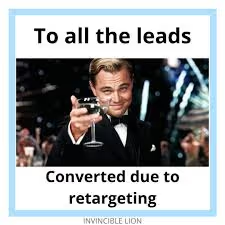
Thanks to a sales prospecting tool, sales teams can prioritize leads that are more likely to convert and craft tailored messages that resonate with their prospects. Besides, reaching out to their prospects on their preferred channel increases the likelihood of conversion.
3. Better Tracking and Analytics
Prospecting without tracking your campaign performance is like throwing darts in the dark. Sales prospecting tools provide insights into how well you’re doing and what needs improvement.
For instance, data around email engagement (open rates, click-throughs, or response rate) shows whether your strategies are working or need refinement. These tools allow you to gauge your performance and improve where necessary.
Conclusion
Nailing down the best “sales prospecting tool” is quite challenging because there are so many sales prospecting tools in the market. Besides, you will have to consider factors such as your team’s needs, the business’s goals and objectives, and the ability to integrate with other tools before you make the final selection.
ColdIQ can’t help you choose from these tools, but it can help you with one thing: maximizing the full potential of these AI sales tools to generate qualified sales opportunities for your business. Our sales experts leverage these tools to drive revenue growth for your business. Book a demo with us today!
FAQ
An effective tool should simplify lead tracking and outreach without requiring complex setup. It must offer automation enough to save time but stay affordable. Small businesses benefit from easy integration with their current software.
Focus on personalizing messages based on real research about prospects. Limit the number of follow-ups and respect unsubscribe requests promptly. Use multichannel touchpoints to engage prospects in different ways.
How do automation tools reduce errors in sales prospecting?
What are the key signs a lead is ready to be contacted?
Let's Get Started!
Schedule a 30-minute call with ColdIQ leadership to learn how our outbound strategy and sales tools help generate qualified leads and close deals.
.avif)
.svg)
